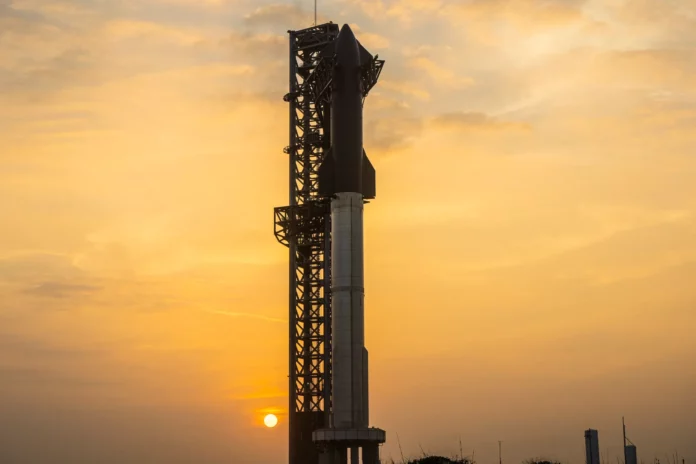The US Federal Aviation Administration has authorized SpaceX to conduct the ninth test flight of its Starship rocket system after two explosions earlier this year.
On Thursday, the agency said it was “expanding the size of hazardous areas in both the United States and other countries” for the flight based on an updated safety analysis provided by SpaceX. The Starship crashes during flights 7 and 8 resulted in a higher probability of a malfunction and, consequently, a larger hazard zone. Danger zones are essentially temporary no-fly zones that the FAA establishes when there is a possibility of a collision with debris.
The new danger zone designated by the FAA covers about 1,600 nautical miles, stretching east from Texas through the Bahamas and Turks and Caicos, where debris from two previous test flights landed. This is roughly twice the size of the danger zone the FAA used for the last Starship test flight in March.
The FAA said it is also requiring SpaceX to conduct the test flight during “off-peak” flight periods, after the previous two Starship accidents forced the agency to divert dozens of domestic and international flights.
SpaceX has been testing its Starship system for two years from a launch complex the company built in south Texas. CEO Elon Musk has stated that the ultimate goal of the system is to send humans to Mars, but the short-term goal of Starship is to allow SpaceX to launch even more of its Starlink satellites into orbit around the Earth. SpaceX also says it will use Starship “to provide greater mission capability for NASA and the Department of Defense.”
So far, SpaceX has used its workhorse Falcon 9 to launch Starlink satellites. In fact, most Falcon 9 launches these days are for Starlink.
But while Starlink has already become a high-demand internet provider, it’s possible that the need for launch capacity could be even greater as the Trump administration reportedly pushes other countries to use the service as leverage in its myriad trade wars.
Staffers from Musk’s Department of Government Efficiency are reportedly helping the agency test Starlink terminals as a potential solution to the FAA’s problems with its current air traffic control system.









